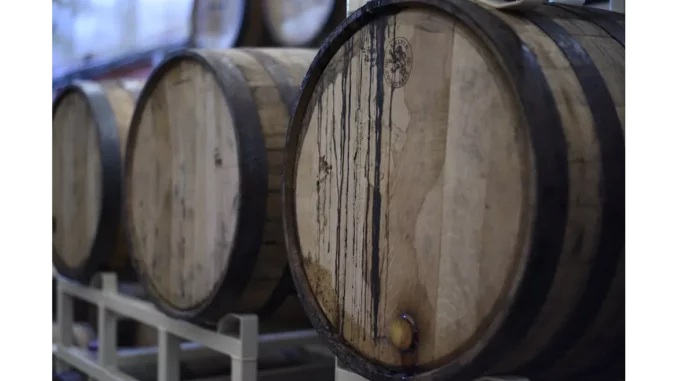
The Art of Wine Storage: Preserving Elegance and Craftsmanship
Luxury, perfected by Elegancia.homes. We plan, build, and guarantee your dream conservatory.
Wine, a sublime blend of history, culture, and meticulous craftsmanship, transcends its role as a mere beverage. It is a dynamic entity, evolving with each moment it ages. Yet, the journey from vine to glass is far from complete upon bottling. Proper storage is paramount in preserving the wine’s integrity and enhancing its nuanced flavours. Whether you are a casual enthusiast or an aspiring connoisseur, mastering the art of wine storage can transform your drinking experience into a celebration of elegance and sophistication.
The Importance of Proper Wine Storage
Wine’s sensitivity to environmental factors makes proper storage essential for an optimal tasting experience. As Marshall Tilden III, Wine Enthusiast’s Chief Revenue and Education Officer, eloquently states, “Wine is a living and breathing thing that is constantly evolving and changing.” The delicate evolution of wine can be adversely affected by temperature fluctuations, humidity, light exposure, and vibrations, each a potential disruptor of wine’s inherent charm.
Ensuring wine is stored correctly allows you to savour it as the winemaker intended, distinguishing between a vibrant, aromatic glass of wine and a flat, vinegar-like disappointment. Understanding the principal adversaries of wine storage—temperature, humidity, light, positioning, and odours—is crucial in safeguarding your collection.
Temperature: The Guardian of Flavour
Among the factors influencing wine storage, temperature reigns supreme. Exposure to high temperatures can lead to maderization, a process that renders wine sour. Conversely, excessively low temperatures may cause the wine to expand, risking cork ejection and subsequent oxidation.
The ideal storage temperature hovers around 13°C (55°F), suitable for all wine varieties—reds, whites, sparkling, and fortified. Consistency is equally vital, as fluctuations can prematurely age the wine, depriving it of its intended character.
Humidity: The Protector of the Cork
Maintaining appropriate humidity levels is essential for keeping corks moist and preventing oxidation. Insufficient humidity can cause corks to dry out, while excessive moisture may foster mould growth and damage labels. A humidity range between 50% and 80% is recommended to create optimal storage conditions.
Light: The Silent Saboteur
Ultraviolet (U.V.) light exposure poses a threat to wine, leading to unpleasant flavours and aromas, a phenomenon known as being “light-struck.” To counteract this, wines are often bottled in dark glass, akin to sunglasses shielding the wine from harm. Store wine in a dimly lit area, away from direct sunlight and harsh fluorescent lighting, to preserve its integrity.
Position: The Horizontal Harmony
Horizontal storage is vital in maintaining the cork’s moisture, preventing it from drying and allowing air to seep into the bottle. This positioning also limits movement, which could disturb sediment and alter the wine’s molecular structure, ensuring it remains poised for the perfect pour.
Odours: The Invisible Threat
Wine “breathes” through its cork, making it susceptible to surrounding odours. To safeguard its purity, avoid storing wine near strong smells, such as garbage, chemicals, or aromatic foods, which could compromise its delicate bouquet.
Short-Term vs. Long-Term Storage
For wines designed for immediate enjoyment, a cool, dark environment—such as a pantry or closet—proves sufficient. Refrigerators can serve as short-term storage but may be overly cold for prolonged periods.
Should you wish to age wine, replicating cellar conditions is imperative. Investing in a wine cooler or a dedicated wine fridge can help maintain ideal temperature and humidity levels. Many of these appliances offer features to mitigate vibrations and odours, making them invaluable for serious collectors.
Preserving Opened Wine
Once uncorked, a wine bottle encounters oxygen, hastening spoilage. To prolong its life, reseal the bottle post-pour and store it in the refrigerator. Employing a vacuum pump to extract air can further preserve the wine’s freshness.
Embarking on the journey of proper wine storage is both art and science, enhancing the depth and pleasure of your wine-drinking ventures. By mastering the conditions that influence wine’s longevity and flavour, you ensure that each bottle fulfils its promise of elegance and sophistication, whether it’s a modest Merlot or a treasured vintage.


Be the first to comment